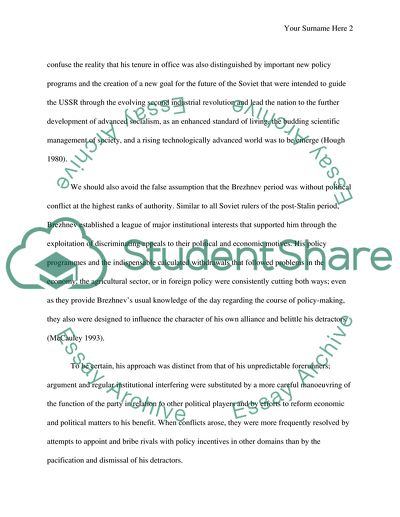Cite this document
(The Brezhnev Regime: A Portrait of a Soviet Leader Research Paper, n.d.)
The Brezhnev Regime: A Portrait of a Soviet Leader Research Paper. Retrieved from https://studentshare.org/history/1727127-historical-importance-of-leonid-ilyich-brezhnev-as-a-leader
The Brezhnev Regime: A Portrait of a Soviet Leader Research Paper. Retrieved from https://studentshare.org/history/1727127-historical-importance-of-leonid-ilyich-brezhnev-as-a-leader
(The Brezhnev Regime: A Portrait of a Soviet Leader Research Paper)
The Brezhnev Regime: A Portrait of a Soviet Leader Research Paper. https://studentshare.org/history/1727127-historical-importance-of-leonid-ilyich-brezhnev-as-a-leader.
The Brezhnev Regime: A Portrait of a Soviet Leader Research Paper. https://studentshare.org/history/1727127-historical-importance-of-leonid-ilyich-brezhnev-as-a-leader.
“The Brezhnev Regime: A Portrait of a Soviet Leader Research Paper”, n.d. https://studentshare.org/history/1727127-historical-importance-of-leonid-ilyich-brezhnev-as-a-leader.


